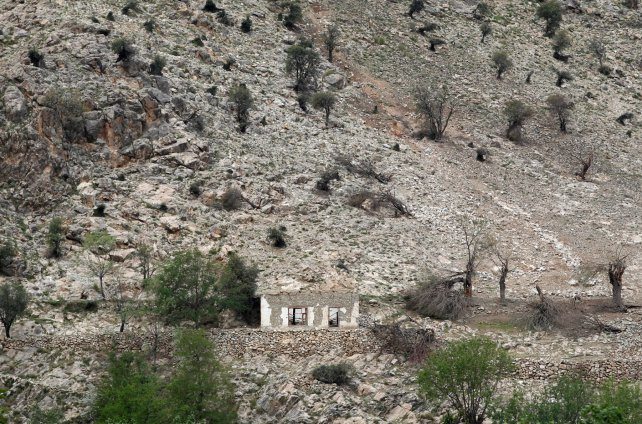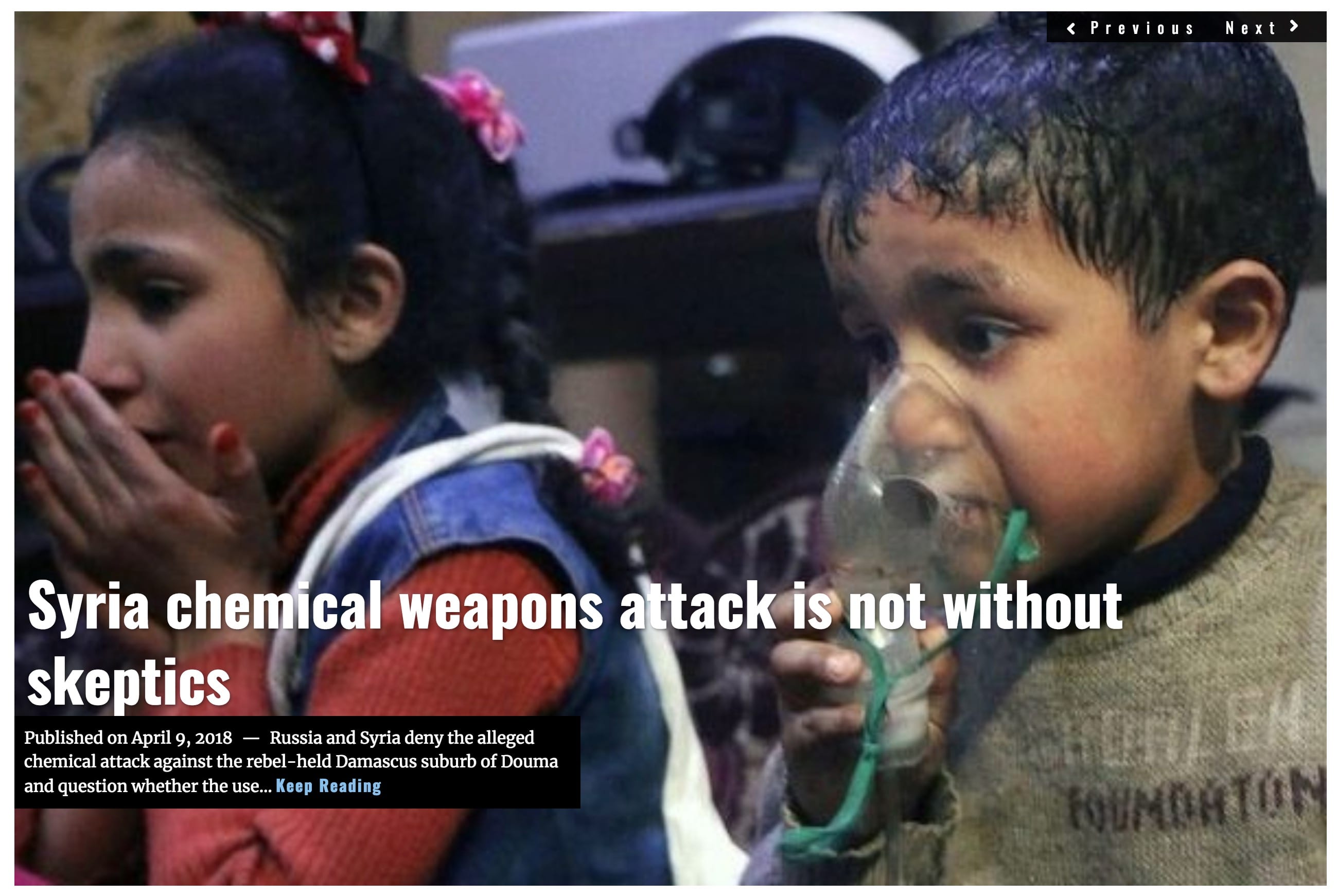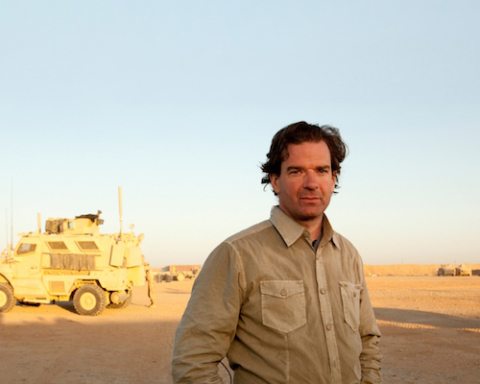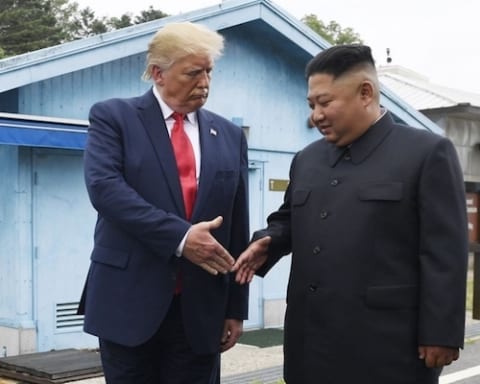KABUL, Afghanistan – Bringing more than 150 years of combined policing experience, this week a New York City Police Department (NYPD) delegation, led by police Commissioner James P. O’Neill, met with Afghan President Ashraf Ghani, CEO Abdullah Abdullah, NATO leaders of Kabul Security Force (KSF), and several other senior Afghan officials. The group discussed topics ranging from fighting corruption, to the transition from a defense force to a police force, crisis response, and general policing tactics.
Considered by some to be the equivalent of among the world’s strongest militaries, the NYPD maintains one of the world’s most elite and sophisticated counterterrorism programs. The department’s Intelligence Division and Counterterrorism Bureau connect to intelligence services worldwide, with liaisons assigned to such places as Abu Dhabi, Indonesia, Tel Aviv, Israel, Amman, Jordan and London.
“In the past, nobody trusted the police,” said Afghan Minister of Interior Affairs, Wais Ahmad Barmak. “If we compare the police of today with eight months ago; I cannot compare it even. The police have changed; the institution has changed. We are in stage one of the reforms, which starts in Kabul.”
https://twitter.com/ResoluteSupport/status/983743345653633024
https://twitter.com/ResoluteSupport/status/984786355032088576
The NYPD delegation included Deputy Commissioner of Intelligence and Counterterrorism, John Miller, who incidentally was one of the last Western journalists to interview Osama Bin Laden during his days with ABC News.
The group also received a briefing on Afghanistan’s Special Police Units and observed a training exercise by Critical Response Unit 222 (CRU-222), a special police unit charged with counterterrorism at the national level.
The visit comes on the tail of recent setbacks for ISIS in Afghanistan, which included last week’s U.S. airstrike that killed the leader of the Islamic State in northern Afghanistan, Qari Hekmatullah. According to NATO / Resolute Support, at the time of his death, Hikmatullah was the senior IS-K commander and the main facilitator of IS-K fighters into northern Afghanistan. General John Nicholson, commander, U.S. Forces-Afghanistan, stated that, “ASSF and U.S. counter-terrorism forces killed Hikmatullah and they will kill any successors … IS-K will be eliminated.”
Just three weeks earlier, a U.S. airstrike killed IS-K platoon commanders, Omair and Abu Samaya, in Sar-e Pul province, followed by an ASSF nighttime raid on the IS-K headquarters in Jowzjan that resulted in 13 deaths.
Rare footage of the raid was released by the U.S. military.
“This tactical defeat of ISIS-K fighters in Jowzjan is the most recent in a series of Afghan and US (special operations forces) counterterrorism successes targeting ISIS-K in northern Afghanistan this year,” said a statement from the Department of Defense.
The Jowzjan raid and the strike against Hikmatullah are part of ongoing security operations against ISIS in Afghanistan, which the U.S. military maintains is driving the group out of the country. However, despite these gains, Russian Foreign Minister Sergey Lavrov claimed recently that the group is gaining “serious ground” according to Russian intelligence. In March, the spokesman for the Pakistani Foreign Office complained of growing border raids on Pakistani positions by ISIS.
However, U.S. officials have dismissed these estimates.
“We see a narrative that’s being used that grossly exaggerates the number of ISIS fighters here,” U.S. General John Nicholson told BBC News in late March. “This narrative then is used as a justification for the Russians to legitimize the actions of the Taliban and provide some degree of support to the Taliban.” In addition to this support, Gen. Nicholson accused the Russians of funneling a yet-to-be-determined quantity of money and weapons to the Taliban.
Despite U.S. coalition gains, ISIS has demonstrated a degree of effectiveness with attacks on the capital of Afghanistan, Kabul.
In March, on the eve of Nowruz, the Persian new year celebration, a man walking in the city center detonated an explosive device, killing himself and 29 others. ISIS claimed responsibility for the suicide attack, which happened in close proximity to Kabul University and the Ali Abad Hospital. The attack happened as many Afghans were marking the Nowruz holiday, a celebration of the start of spring.
The attack brought the total deaths from Taliban and ISIS in Afghanistan to 200 so far this year, indicating that last year’s record-setting surge in violence is likely to continue. In spite of 17 years of fighting, the government of Afghanistan only controls just over half of the country’s districts.
The ability of ISIS to launch attacks in the capital comes at a year long effort to drive the group out of the country. This offensive was highly publicized in April of 2017, when the U.S. used the “mother of all bombs” (MOAB) to attack the ISIS-controlled Nangarhar province.

At the end of 2017, the U.S. military estimated that there were a total of 700 ISIS fighters in Afghanistan. That was down from an estimated 3,000, courtesy of about 139 airstrikes. The U.S. military accounts for less than 50 of these aerial operations, but, according to the LA Times, U.S. fighter planes dropped 3,554 explosives in the country in 10 months.
The United Nations Assistance Mission in Afghanistan (UNAMA) documented 295 civilian deaths in Afghanistan from airstrikes in its 2017 annual report. 154 of these deaths were attributed to international military forces, of which the U.S. is responsible for a majority. Thousands more have been injured by the conflict as well.
The number of people displaced in Afghanistan in 2017 was about 437,907, according to an Amnesty International report. This brings the total displaced to approximately 2 million civilians. “It’s like a balloon. We squeeze them in this area, and they’ll try to move out elsewhere,” said Gen. Nicholson, describing attacking ISIS in Afghanistan.
LIMA CHARLIE NEWS, with Anthony A. LoPresti and Diego Lynch
Lima Charlie provides global news, insight & analysis by military veterans and service members Worldwide.
For up-to-date news, please follow us on twitter at @LimaCharlieNews
In case you missed it:

![Image NYPD in Afghanistan, ISIS suffers key setback [Lima Charlie News][NATO photo: Erickson Barnes]](https://limacharlienews.com/wp-content/uploads/2018/04/NYPD-in-Afghanistan-ISIS-suffers-key-setback.jpg)


![Image Strike a deal with which devil? The many faces of the Taliban [Lima Charlie News][Image: Anthony A. LoPresti]](https://limacharlienews.com/wp-content/uploads/2019/03/Many-faces-of-the-Taliban-Lima-Charlie-News-Anthony-LoPresti-480x384.png)
![Image The Killing of Osama Bin Laden. Is there a Doctor in the House? [Lima Charlie News]](https://limacharlienews.com/wp-content/uploads/2018/05/The-Killing-of-Osama-Bin-Laden.-Is-there-a-Doctor-in-the-House-480x384.png)



![Blossoming Russo-Turkish alliance leaves U.S., NATO behind [Lima Charlie News]](https://limacharlienews.com/wp-content/uploads/2019/07/Russia-Turkey-alliance-leaves-U.S.-NATO-behind-480x384.png)


![Image Strike a deal with which devil? The many faces of the Taliban [Lima Charlie News][Image: Anthony A. LoPresti]](https://limacharlienews.com/wp-content/uploads/2019/03/Many-faces-of-the-Taliban-Lima-Charlie-News-Anthony-LoPresti-150x100.png)
![Image The Killing of Osama Bin Laden. Is there a Doctor in the House? [Lima Charlie News]](https://limacharlienews.com/wp-content/uploads/2018/05/The-Killing-of-Osama-Bin-Laden.-Is-there-a-Doctor-in-the-House-150x100.png)